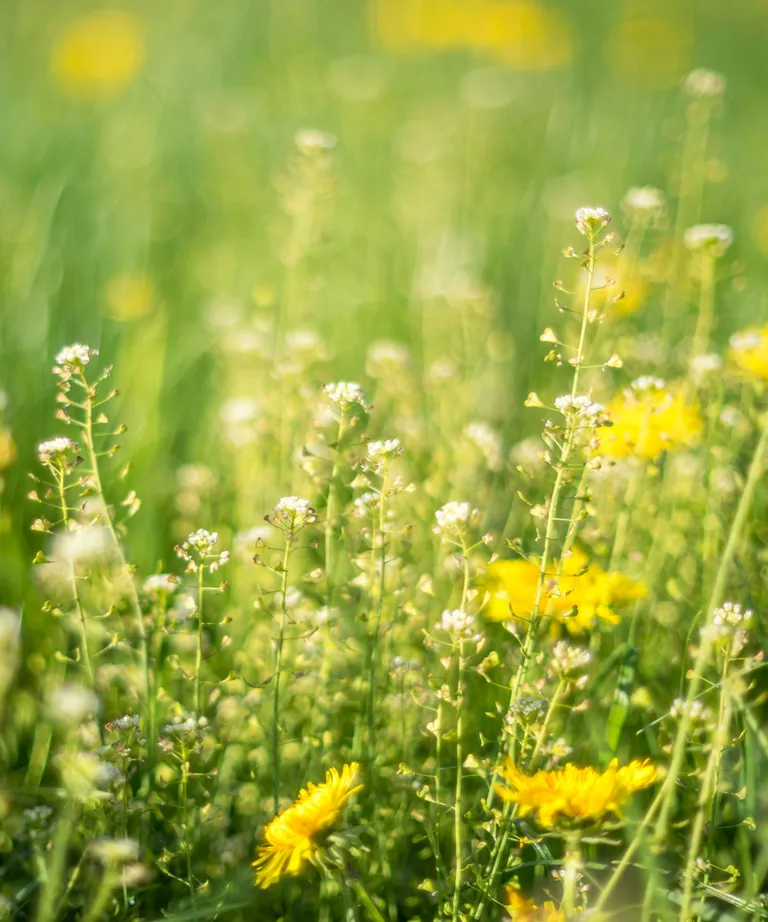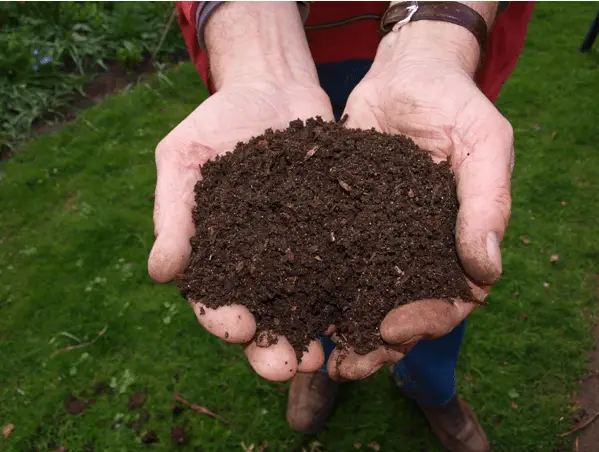How to Fertilize Your Lawn in Spring
Last Updated on March 16, 2025 by Duncan
Most homeowners fertilize their lawns in the spring, followed by one or two additional applications throughout the growing season. If you fertilize your grass, do not do so too early in the season.
The optimal time for the first application is late spring when the green grass grows quickly. In early April, the grass focuses its energy on root formation. If you apply fertilizer too early, the plant’s energy will be diverted prematurely to leaf development. And you don’t want this.
Tip
Healthy grass will have a light shade of vivid green. Grass that is a dark, almost blackish green has been heavily fertilized. The dark green tint results from a lot of nitrogen-based fertilizer applied to the lawn.
Which fertilizer should you use to fertilize your lawn?
There is strong evidence that phosphorus and nitrogen from lawn and agricultural fertilizers are contaminating streams, rivers, and groundwater supplies, creating a serious environmental problem.
Whether you believe in organic gardening or low-impact-to-chemical gardening practices will determine whether you should fertilize your lawn.
Organic lawn owners avoid using chemical products as fertilizers because they are concerned that the fertilizer runoff may enter the local water supply.
Organic lawn fertilization tips
There are a few organic ways to feed grass safely. You can use a mulching mower, which chops grass into fine particles that decompose on the lawn.
According to horticultural experts, this practice supplies as much nitrogen to a lawn as one full application of lawn fertilizer throughout the season.
You can also use organic fertilizers manufactured from natural ingredients instead of processed chemicals. Organic fertilizers will nourish your grass, but they are typically less nutrient-dense (nitrogen, phosphorous, and potassium) than industrially refined fertilizers.
Non-organic lawn fertilization
Traditional chemical lawn fertilizer is still the most popular option, and it is easily available at hardware stores, big-box home improvement stores, and garden centers.
These fertilizers are available in numerous types. Some fertilizers are seasonally appropriate, such as early-season fertilizers, midsummer fertilizers, and late-season “turf-builder” combinations.
Other fertilizers are more appropriate for flowers or veggies. Another category includes herbicides, which feed the grass, destroy weeds, and inhibit weed development.
Pre-emergent herbicides are a mix of fertilizer and crabgrass control herbicides that you can spray in early spring. This combined product does not receive a full feeding of fertilizer.
This small amount of fertilizer stimulates grass growth and keeps it alive, whereas the herbicide in the product inhibits crabgrass seedling development.
How much fertilizer should you apply?
Most fertilizer manufacturers are overzealous about their recommended dose and feeding schedule (after all, the more you use, the more you have to buy).
You should begin light with half the recommended amount and rate of fertilizer, and you can reapply if you don’t like the results. After a season or two, you’ll clearly understand how much it takes to get a healthy lawn.
When should you apply the fertilizer?
Homeowners who prefer organic fertilization methods may apply a single “turf-builder” application in the early fall to promote root growth.
In the spring and summer, most people avoid using fertilizers and instead rely on the nitrogen in mulched grass clippings to nourish their lawns.
If you use traditional fertilizer, you should apply two or three light applications per growing season—one in the spring, one in midsummer in areas where it is necessary, and one “turf-builder” application in early fall.
Your area and the kind of turf grass you have will determine when to apply it. Speak with a nearby garden center specialist or contact the closest cooperative extension office for more suggestions for your region.
Once the optimal timing has been determined, attempt to schedule the fertilizer application during a brief rainfall event. Otherwise, you must water your lawn at least a quarter inch before applying the fertilizer.
Don’t fertilize, though, right before a big storm. Fertilizer nutrients are more likely to leak into storm drains and streams during a downpour.
The slow-release feature of the fertilizer will promote grass growth in the spring if you fertilized your lawn last fall, particularly late in the growing season.
Turf professionals and agronomists (soil experts) advise against fertilizing your lawn in the early spring, despite the advice of fertilizer manufacturers and lawn care firms.
The root system of cool-season grasses starts to expand and accumulate reserves of carbohydrates (energy) as they “wake up” in the spring.
Don’t fertilize the lawn until late spring (late May or early June), right before summer heat arrives and the grass is flourishing.
Your lawn will be ready for summer if you start feeding it now. The grass will begin to use the stores and slow down the creation of carbohydrates during the sweltering summer months.
A sufficient amount of 3/4 to 1 pound of slow-release nitrogen can help the grass replenish its stores of energy (carbohydrates) and protect it from summertime stressors, including heat, drought, traffic, disease, and insects.
You can feed the grass for 12 weeks using a slow-release fertilizer covered with polymers.
Which is the best spring fertilizer for your lawn?
There are several options for lawn fertilizers. The first step in choosing fertilizer is determining your grass type.
Fertilizers will be labeled for certain grasses, typically classified as “cool season” and “warm season” grasses. Ensure that the grass on your lawn is represented in the product.
Then, you can select between granular and liquid fertilizers. Granular fertilizer delivers benefits over a longer period, making it great for slower-growing grass.
Still, liquid fertilizer produces immediate results, making it a better choice for fast-growing grass. Consider which option will best suit your grass.
FAQs
Which month is best for fertilizing the lawn in the spring?
Your area determines which month is best for fertilizer application. It might be February in warmer climates and April or May in regions with colder winters.
The ideal moment is when the grass appears to need its first mowing, is vigorously growing, and is turning green again.
What happens if lawn grasses receive an excessive amount of fertilizer?
Over-fertilizing your lawn can lead to an accumulation of salt and nitrogen in the soil, which can kill the grass or harm the roots of your turf. The grass may have browned or yellow tips or appear crispy yellow or burned. And you don’t want this, do you?
Is it better to fertilize your grass before or after rain?
If storms are expected, apply fertilizer until a day after the rain. A severe rainstorm may wash away the fertilizer before the lawn can absorb it.
What fertilizer should I apply to my grass this spring?
Determine your grass type and then select an appropriate fertilizer for that type. Consider if you want to use granular, slow-release fertilizer or faster-acting liquid fertilizer.


